- USD
- EUR
- GBP
- AUD
- CAD
- ZAR
Namibia's landscape of deserts, dunes, and stars affords travelers a unique getaway. Wildlife abounds in areas like Etosha National Park. The country is an ideal vacation destination for those wishing to get away from it all. The vastness of its open spaces captures the soul in a way that is hard to describe but is sure to leave you relaxed and refreshed after visiting Namibia.
Need Advice?Namibia's top destinations include Sossusvlei, a unique desert landscape in the country's southwestern part, and the Etosha National Park in the far north. Both of these destinations offer endless horizons and a sense of spiritual bliss.
Etosha is the top safari destination in Namibia. The park offers exceptional photographic opportunities in a unique landscape.
Savor the feeling of being away from it all in an area with magnificent desert scenery and star-studded night skies.
With its German character, the coastal town of Swakopmund is the most popular seaside destination in Namibia.
Namibian vacations offer great value and unique safari experiences on the African continent.

Browse our thoughtfully crafted safari tours.

All our tours and safaris can be customized.

Important information about visiting Southern Africa.
Though less noteworthy than the destinations listed above, the vast land of Namibia holds many treasures. From Kaokoland and its desert elephants to the mighty Fish River Canyon visitors are spoiled for choice.
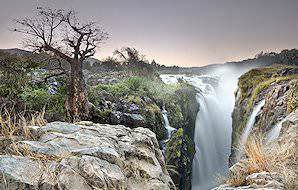
The Caprivi is the most far-flung of the Namibia safari destinations visited by African Sky. This unique pocket of wilderness occurs where four rivers - the Kwando, Chobe, Linyanti, and Zambezi - meet. The lush oasis draws a wealth of wildlife and hosts a handful of beautifully located lodges.
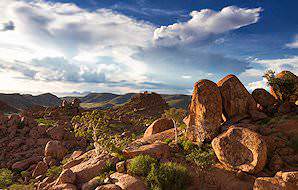
Damaraland covers 16 000 hectares southwest of Etosha National Park. This ancient region includes popular tourist sites like Twyfelfontein, with its ancient rock engravings, and the Brandberg Massif, Namibia's highest mountain. This part of the country is also home to the Damara tribe, Namibia's oldest inhabitants.

The Fish River Canyon is located in the far Southern part of Namibia. It is the world's second-largest canyon after the Grand Canyon in North America. It is 161 km long, over half a kilometer deep, and stretches for 27km at its widest point - a natural spectacle that is quite inspiring.

The Fish River Canyon is located in the far Southern part of Namibia. It is the world's second-largest canyon after the Grand Canyon in North America. It is 161 km long, over half a kilometer deep, and stretches for 27km at its widest point - a natural spectacle that is quite inspiring.

The Skeleton Coast is a barren stretch of coast located where the icy waters of the Atlantic Ocean meet the harsh desert conditions of the Namib Desert. Many shipwrecks line its inhospitable shores. Sixteen thousand square kilometers are protected as a national park and include a striking smattering of wildlife.
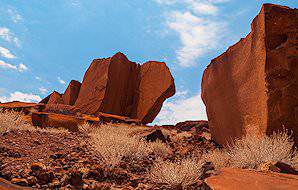
Twyfelfontein is a UNESCO World Heritage Site located in the Kunene region of northern Namibia. The area has been inhabited for a period exceeding 6 000 years. It has over 2 500 unique rock engravings that bear testament to the various groups of people who inhabited the region over the millennia.

Located in central Namibia, the Waterberg Plateau Park was established in 1972 to protect the mountainous landscape that sits high above the Kalahari in the eastern part of Namibia. The park has been instrumental in the protection of Namibia's endangered species. Successful breeding programs for the black rhino made it possible to reintroduce them from this park to Damaraland, where they had become locally extinct.
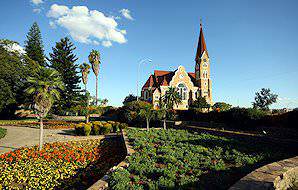
Windhoek is Namibia's capital city and the gateway to all the safari areas in the country. Much of the country's German colonial history is still prevalent in the city's architecture and overall atmosphere. Notable landmarks include the three castles and the old Lutheran church.
You will find that the unique Southern African country of Namibia has many vacation options to offer even the most seasoned travelers.
Namibia is an arid, sparsely populated country between the Kalahari Desert and the South Atlantic. It offers a striking diversity of cultures, national origins, and many wildlife reserves. The country is a photographer's dream - it boasts wild seascapes, rugged mountains, lonely deserts, stunning wildlife, colonial-style cities, and nearly unlimited elbow room.
The world's oldest desert holds many old tales, secrets and beautiful scenes, each unique and completely unlike the other. From stories of underground lakes, thousand-year-old flowers and elephants that survive in the desert, to rock art of people thousands of years old, and relics of bygone eras.
This place, where the sands meet the rolling waves of the ocean, is not just a place of mystery, but also a place of adventure. Huge dunes, 4x4 tracks and shipwrecks are found here, as are quad bike tours over the sands and nighttime stargazing every day of the week.
Explore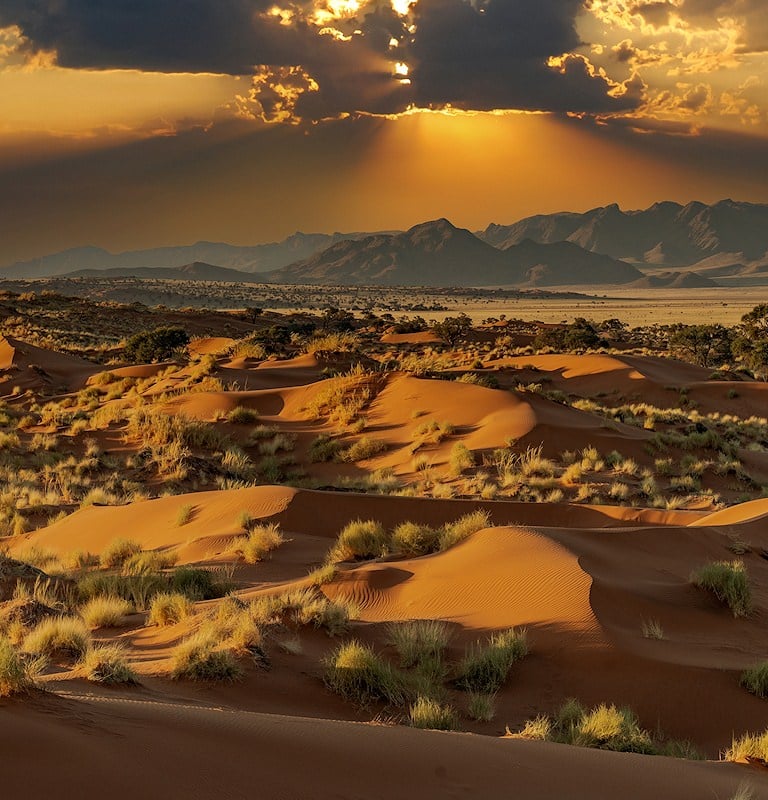
Quality fresh produce from the sea and the land is prepared with African and German influences.


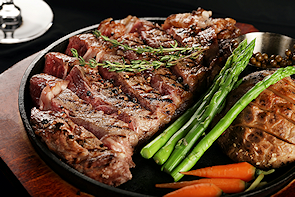

From Johannesburg or Cape Town, guests typically take a flight of around two hours to Windhoek, Namibia's capital city, and the gateway to the safari areas. For visitors wishing to circumvent Windhoek, daily flights are now available between Johannesburg and Cape Town, and Walvis Bay, a small outpost wedged between the icy waters of the Atlantic Ocean and the looming Namib Desert. Walvis Bay is less than an hour's drive from the seaside resort town of Swakopmund, which is superior to Windhoek in terms of tourism.
Namibia likes to brand itself as "one of the sunniest countries in the world," which is not without merit – the country averages 300 days of sunshine a year. The result is a generally hot and dry climate with low humidity. It is thus quite popular to visit Namibia during the winter and early spring, roughly May to October, when the country experiences cooler temperatures. The dryness during this time forces animals to congregate around limited water sources, which makes for rather spectacular game viewing.
The rainy season does have its charm, however. It may be hot, but seeing typically arid landscapes erupt in bits of greenery is quite something. Though rare, the clay pan of Sossusvlei occasionally fills up with water during exceptionally wet periods, which is a most remarkable sight amongst the towering dunes.
The coastal climate is quite harsh. Due to the cold Benguela Current along the Atlantic coast, the temperatures tend to drop enormously compared to other areas of the country. Even in the hottest months (January – March), the temperatures of the Atlantic Ocean rarely exceed 19 degrees C.
In terms of its visa regulations, Namibia is very accommodating. Most European countries do not require visas, nor do visitors from the United States, Australia, New Zealand, Russia, China, and Japan. It is still imperative, however, that you check on either the Namibian government's official website or contact the nearest embassy in your country to be sure. Travel regulations change frequently.
Visa costs depend on the duration of your stay in Namibia. For travel with African Sky, this will always fall within the three-month visa category, currently priced at N$390, which is, at the time of writing, under 30 USD. The price for a multiple-entry visa is the same. It would be best if you acquired your visa before you arrived in Namibia.
Malaria is prevalent in the northeastern corner of Namibia, where the border meets northern Botswana, Zambia, and Angola. The area affected is much of the inland region north of Windhoek. In terms of tourism, this includes Damaraland, Etosha National Park, and the Caprivi Strip. Coastal areas like the Skeleton Coast, Swakopmund, Walvis Bay, and Luderitz are malaria-free, as are Southern inland destinations like Sossusvlei and the Fish River Canyon.
To prevent malaria, consult your physician for recommended anti-malarial medication. Mosquito repellent is generally considered a safari essential. Though most upmarket lodges will provide repellent in your room, it is nevertheless a good idea to carry your own.
As is standard when traveling anywhere in the world, it is highly recommended that you are up-to-date with routine vaccinations like MMR, DPT, varicella, and polio.
By and large, crime rates are very, very low in Namibia. As is often the case, however, petty crime can (and does) occur in urban centers like Windhoek and Swakopmund, so nevertheless, be discreet with your valuables. If an in-room safe is unavailable at the hotel or lodge where you are staying, ask reception to store your valuable items for your stay.
When enjoying a safari, avoid approaching or feeding wild animals, as once they associate human beings with food (particularly monkeys and baboons), they can become quite aggressive and need to be dealt with by park authorities - an unpleasant yet entirely avoidable scenario.
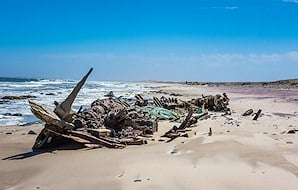
The Skeleton Coast offers a ghostly experience. Countless ships have met their end along Namibia's rugged, fog-riddled coastline, blemishing its shores with a vast graveyard of wrecks. Some shipwrecks date back to when Portuguese explorers and Dutch East India Company ships circumvented the Cape en route to India. Few remain intact, however, due to the relentless battering by the Atlantic Ocean breakers and sand-blasting by the prevailing southwest wind.
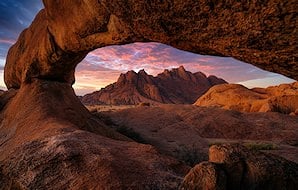
Spitzkoppe is a group of granite hills that rise dramatically from the floor of the Namib Desert between the Namibian towns of Swakopmund and Usakos. The highest of these hills is 1784m above sea level. Many fine examples of bushman artwork can be seen in the region. It is also popular amongst hikers intent on conquering the hills and photographers keen on capturing stunning images of various rock formations.
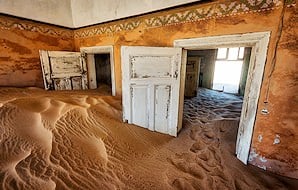
A ghost town reclaimed by the desert after a brief heyday in the early 20th century, Kolmanskop is Namibia's most famous ghost town. It is located a few kilometers inland from the port town of Luderitz in southwestern Namibia. Kolmanskop was born out of a diamond rush in 1908; the town started to decline after World War I when diamond prices hit rock bottom. Forty years after it was born, the town died and was reclaimed by the harsh desert surrounding it.
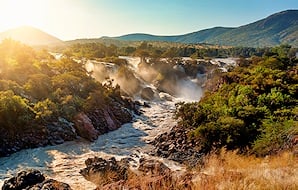
Epupa falls occur in the Kunene River in the Kaokoland region of Namibia. The name is a Herero word that means "the mist created by falling water." The main attractions are hiking trails and the scenery created by baobab trees and falling water. It is possible to swim in some of the pools at Epupa. Those who wish to try should be mindful of crocodiles.

The Welwitschia plains lie between the Swakopmund River in the south and the Khan River in the north. They form part of the arid plains of the Namib Desert and are home to the largest concentration of Welwitschia plants in Namibia. Some of the larger examples are 2 000 years old.

Cape Cross originated in 1486 when the Portuguese seafarer Diego Cao planted a stone pillar topped by a cross to stake his country's claim to the territory. The reserve surrounding the cross Cao planted is today home to the largest colony of Cape fur seals on the planet. During November and December, the colony's size can swell to include 210 000 individuals.

Dias Point marks the spot in Luderitz's, a Southern Namibian port town where the Portuguese seafarer Bartolomeu Dias erected a padrao on 25 July 1488. The original landmark was destroyed - a replica was unveiled on the original spot on 25 July 1988 to commemorate the 500th anniversary of the Dias landing.

Dune 7 is about 7km east of Walvis Bay. It is the highest dune in Namibia and is the focal point of many adventure activities, including dune boarding, quad biking, and hiking trips dedicated to conquering this mountain of sand.

Namibia's petrified forest is located about 50km west of Khorixas, about an hour and a half south of the Etosha National Park. The "forest" consists of enormous fossilized tree trunks, estimated to be around 280 million years old. Scientists established that the trees did not grow in Namibia but were washed down a river in ancient times.
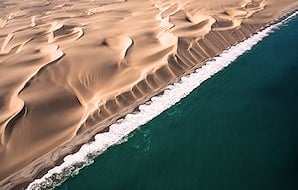
Sandwich Harbor is a coastal lagoon 55km south of Walvis Bay in the Namib-Naukluft National Park. The area is named for a ship called 'The Sandwich,' anchored here around 1790. The site is part of the Namib Sand Sea, with dunes as high as 100m. No roads exist to this attraction - existing sand tracts change and disappear due to the coastline's onslaught of tides and wind.
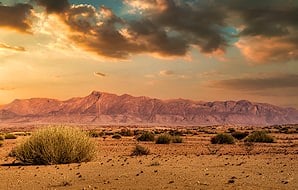
Brandberg Mountain is located in the Namib Desert in the Damaraland area of northwestern Namibia. "Brandberg" is an Afrikaans name meaning 'burning mountain'. This name was given to the mountain because the setting sun illuminates it and gives it the appearance of glowing a reddish color from a distance.

Ballooning over the significant wilderness areas of Namibia is an experience you will remember. The excursion typically starts pre-dawn with the opportunity to witness a sunrise over this ancient land from a unique vantage point. The flight lasts about an hour, followed by a champagne breakfast at a remote location. The entire excursion is usually around three and a half hours.

Namibia's sea of sand offers a few unique adventures ranging from hiking in the dunes to sand boarding, an activity that is not for the faint-hearted but sure to appeal to adventure-seekers. Exploring the desert on a quad bike is another activity in this corner of the world.
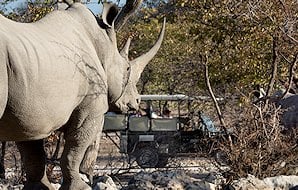
Suppose you are staying at a lodge or camp in one of the wilderness areas of Namibia. In that case, daily game drives will be the mainstay of the activities enjoyed on your Namibian vacation. The possibility of some unique sightings, like the rare desert black rhino and black-faced impala, is sure to add a degree of excitement and anticipation to your game drives.

The various lodges found in Namibia generally offer a variety of spa treatments. These treatments range from massages to facials, manicures, and pedicures. They are offered either at a dedicated spa at the lodge or within the privacy of your suite's private deck, overlooking scenic landscapes.

The waters of the Namibian coast are some of the richest fishing grounds in the world. Fishermen should book a charter out of Walvis Bay, Swakopmund, or Henties Bay. The rivers in the northern part of Namibia offer exceptional freshwater fishing, with the legendary tiger fighting fish providing an especially popular pursuit.
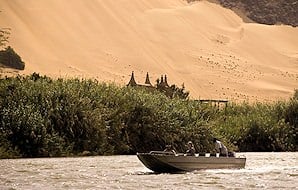
A variety of short cruise excursions are available from both Swakopmund and Walvis Bay. These range from cruises dedicated to viewing the rich marine life of Namibia, whether it be dolphins, whales, or seals. A few leisurely sunset cruises are also available to those wishing to view a sunset over the Atlantic.
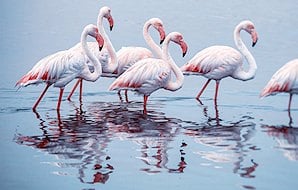
Namibia is home to approximately 650 bird species. What makes birding in Namibia special is the incredibly diverse habitats where birds can be spotted, from the desert coastline and unique attractions like Sandwich Harbor to the waterholes of Etosha, where a great diversity of bird species congregate during the dry winter months.
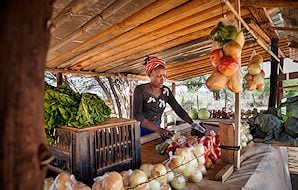
Despite its immense size, Namibia has the second-lowest population density in the world. It is mainly due to the nature of the environment – vast and arid - great expanses of nothingness. However, the tiny population (just over 2 million) is remarkably diverse. Around half of the population consists of Ovambo. Like the black Africans of South Africa, their origins can be traced to the Bantu-speaking migrants that journeyed south in the early first millennium.
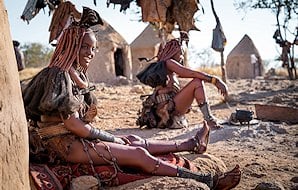
The remaining population percentages are generally evenly divided amongst other indigenous groups. These groups include; the Kavango coloreds, the Herero, the Damara, and Namibian whites, the majority of which are Afrikaners originally from South Africa and the minority of which are Germans descended from the country's colonizers.
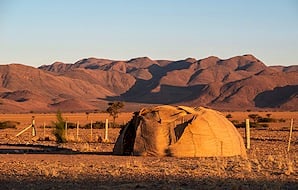
A much smaller percentage belongs to the Nama, a subgroup of the nomadic Khoikhoi and the most populous surviving ethnic group to speak a dialect of the Khoi's click-based language. A small San population still inhabits the easternmost reaches of northern Namibia – the last of Southern Africa's indigenous hunter-gatherers.

Namibia's topography is dominated by a narrow coastal plain and a broad inland plateau that is separated by a rugged escarpment. The coastal plain extends eastwards from the coast for between 80km (50 miles) and 120km (74.5 miles) to the escarpment. With an average rainfall of about 10mm (0.4 inches) a year at the coast and 150mm (6 inches) in the stretch along the eastern edge of the desert, this is a highly arid tract of land.
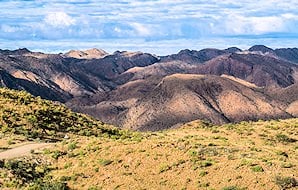
The escarpment forms part of the Great Escarpment of Southern Africa, which extends from Southern Angola towards the Drakensberg in South Africa. Namibia is characterized by a deeply eroded mountain chain running brokenly from the Kunene River north to the Orange River south. The central highlands, a landscape of dissected rolling hills, are known as the Khomas Hochland.
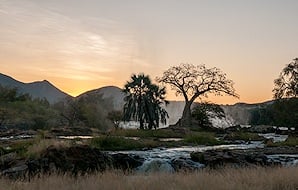
East of the escarpment lies the inland plateau, an area of vast plains fringed by low mountains, scattered hills, and 'inselbergen' (island mountains). Further east, the landscape consists of low, rolling Kalahari dunes. The Caprivi, in the far northeast of the country, is a region of rivers, narrow water channels, and woodlands unlike any other part of Namibia.





This website uses cookies. To learn more about how we use cookies, please view our Privacy Policy. By clicking "I Accept" on this banner, you consent to the use of cookies unless you have disabled them.